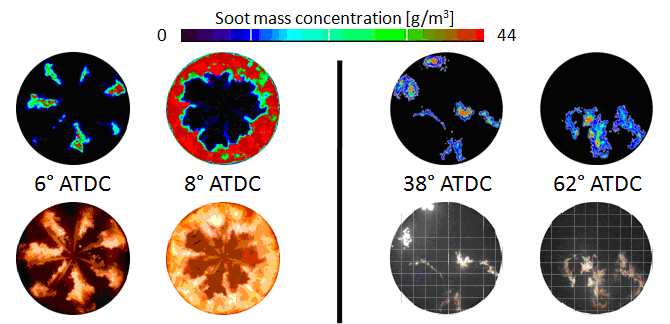
Particulate Formation
The Environmental Protection Agency (EPA) and the European Union (EU) have emphasized the need for regulating the dimensional characterization of the particle exhaust emissions from i.c. engines : the next Euro VI limit, to be adopted by 2015, will concern the exhaust particle size from diesel engines.
Measurements performed in Instituto Motori using optical systems and SMPS (Scanning Mobility Particle Sizer) and ELPI (Electrical Low Pressure Impactor), have provided bidimensional distributions of the soot at the exhaust of engines operating with innovative combustion strategies with maximum values around 3-5 nm and 40 nm.Some experiments are focused to identify the functional link between the formation process within the chamber and the products at the exhaust by means of spectroscopic measurements. Other research activities concern the deepening of the knowledge on the mechanism of soot oxidation.
However, the insufficient level of available experimental data, especially at high pressure, for the verification of the theoretical models of formation/oxidation of the soot can be bridged by a campaign conducted through the shock tube system.Considerable technological advances in new generation diesel engines have drastically reduced particulate emissions: the innovative injection strategies made possible by the introduction of common-rail systems, and the adoption of alternative combustion (PCCI, HCCI, and so on) have reduced the particulate formation in combustion chamber further lowered by the adoption of the post-treatment devices. Consequently, taking into consideration the low value of the current and future emission limits, the measurement of the particulate mass concentration with the techniques that have been used to date appears to be problematic.
For this reason, an optical diagnostic system has been developed and implemented. It is based on the CRDS (Cavity Ring Down Spectroscopy) tecnique, to measure the particulate extinction coefficient at the exhaust. The technique shows a high sensitivity (Kext fino 10-5 m-1), which allows to measure the very low concentrations of particulate matters (up to 1μg/m3), and a highly timing resolution.
